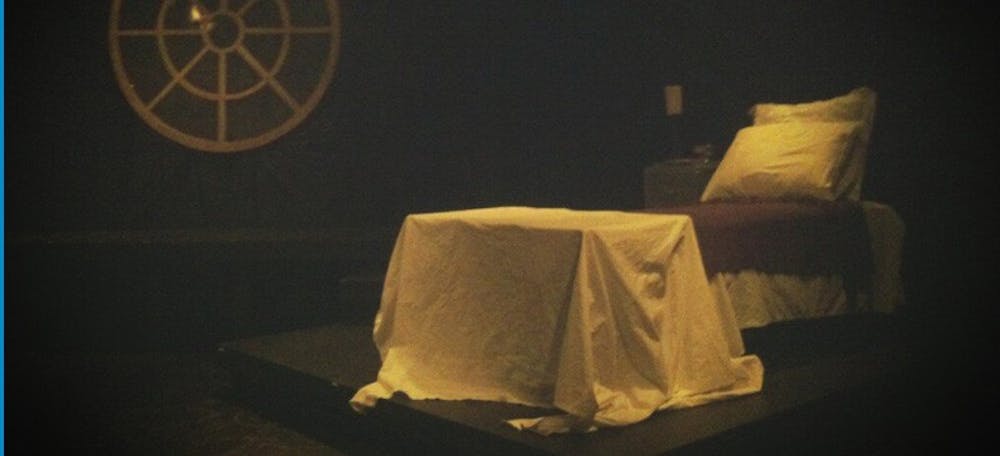Under a full moon, it could have been Halloween Feb. 25 at the Harold Acting Studio. Cotton cobwebs, a fake skull and a buzzing black and white television decorated the front steps. A hunched Frankenstein-like greeter grasping a three-tier candleholder led each individual or group in and directed them to a seat. This simple introduction confirmed the horror to come later in the play: “Lucid Nightmares” was not going to be an ordinary scare.
Four female seniors in the current Theatre Studies class -- Sarah Beese, Elizabeth Floyd, Jayme Mantos and Ashley Meeks -- wrote the play for class. It is the first fully developed play the group has ever produced.
The women found inspiration in Edgar Allan Poe’s work as they started writing the play. This deceased writer feasted on gothic horror and wrote some of the most disturbing pieces in American literature.
Monday night was a full house. Audience members walked quickly inside the theater to find a seat in the middle – a seat on the end of a row would surely mean interacting with the horrors up close and personal. The room was foggy with dim lighting until the start of the play, when it went almost completely black.
Beese, clothed in black and holding a small candle, entered the stage first. Before exiting the stage, she warned the audience to guard their souls.
“Lucid Nightmares” was split into three parts, each performance challenging the insanity of its characters. The title of the play itself questioned the reality of each scene. While some sections appeared realistic, others seemed more dreamlike.
The playwrights seemed to know when the audience would feel calm because as soon as the tension started to die down, something would happen – a suffocation, a confession or a fantastical change – and viewers would be gripping their seats again.
The women also knew how to include precise and intriguing details to disturb the audience, such as an old woman’s obsession with a dead youth’s teeth. The playwrights were also aware of how to successfully portray two different scenes at the same time and have their viewers understand what had happened.
The second section of the play started after a somewhat unorganized and lengthy blackout, and the Harold Studio presented other difficulties for the cast and crew. The platforms the performers walked across were exceptionally squeaky, which was sometimes favorable since the effect created additional anxiety. But when it became difficult to hear the performers speak, it was easy to lose track of what was happening.
Aside from minor technical flaws like microphone static and fog machines’ sputters, “Lucid Nightmares” was a remarkably well-done play in an industry where horror is rarely experimented with or attempted at all.
"Lucid Nightmares" video by seniors Merissa Blitz and Ryan Mass


